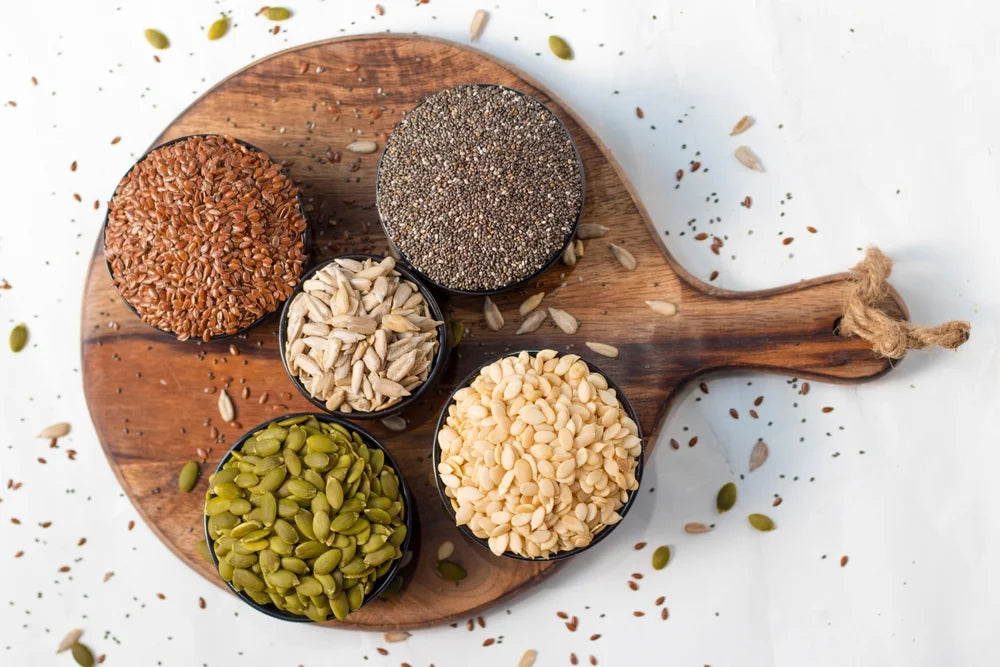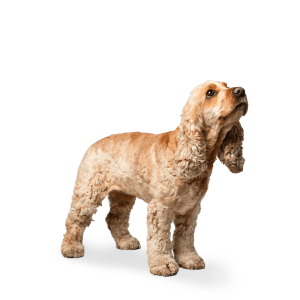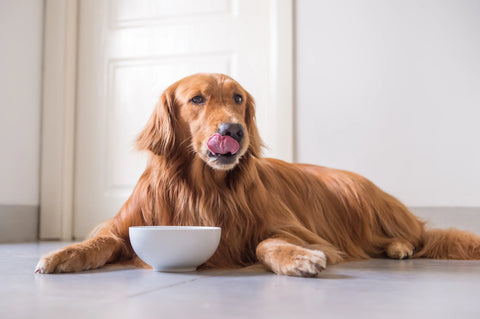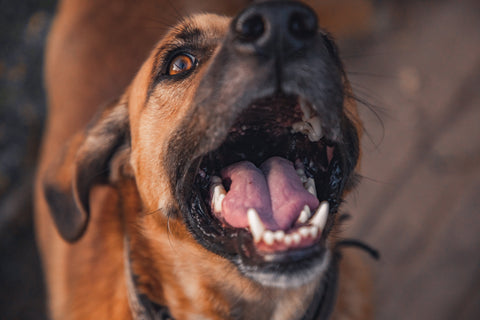

10 foods to help express dogs anal glands naturally
Worried about your dog’s scooting habit and the state of your rug? Blocked anal glands are often behind the bum-dragging. Luckily, high-fibre foods can help anal glands empty the way nature intended by firming up your dog’s poop. In this article, we’ll look at homemade additions to your dog’s diet that can make a big difference.
What are anal glands in dogs?
Anal glands are two small scent sacs, positioned at about the 4 o’clock and 8 o’clock spots around your dog’s bum. The smelly fluid released when your dog poops is a bit like a social media profile; it carries information about who your dog is. When left behind in strategic places, it’s their version of posting an update or dropping a few “likes” around their territory.
But things don’t always empty smoothly. Anal glands can become blocked, for example, if your dog has had diarrhoea or constipation. Sometimes, if the glands are too full and painful, your pup may even hold back from going to the toilet, which can make the problem worse.
10 best foods for dogs with anal gland issues
Firm, bulky poops help with regular emptying by applying extra pressure to the anal glands when your pup goes to the toilet, reducing the chance the glands overfill. The bonus is that natural fibre sources often contain other beneficial nutrients, though sometimes those come packaged with less-welcome extras like sugar, starch, or fat. That’s why it’s important to choose carefully. Not every high-fibre food is suitable for every dog, so here’s how to trial new additions safely:
- Introduce gradually – Build up to the recommended level over 1–2 weeks to check for tummy upsets like gas, bloating, or diarrhoea.
- Portion with care – Tailor the amount to your dog’s size, diet, health conditions and poop quality (if it’s already very firm, more fibre may not be a great idea).
- Keep water flowing – Fibre only works properly if your pup stays well-hydrated.
- Mind natural sugars – Fruits and root veg do contain extra sugar.
-
Check with your vet – For dogs with diabetes, pancreatitis, or food sensitivities, get the green light from your vet before starting.

Here are some of the best foods to support healthy anal gland function:
1. Pumpkin
Pumpkin is rich in soluble fibre:
- How to serve: Cook plain pumpkin, mash or puree, or use unsweetened canned pumpkin (never pie fillings with sugar/spices).
- Portion guide: 1–2 tsp for small dogs, 1–2 tbsp for medium dogs, 2–4 tbsp for large dogs.
-
Extra benefits: Vitamins A and C
2. Apple
Apples provide both soluble and insoluble fibre:
- How to serve: Fresh slices; always remove seeds and core.
- Portion guide: 1–2 slices for small dogs, up to half an apple for large dogs.
- Extra benefits: Vitamin C and antioxidants
-
Avoid giving the skin to dogs with sensitive tummies.
3. Carrot
Carrots are high in fibre and water:
- How to serve: Raw sticks for chewers, or cooked/mashed for easier digestion.
- Portion guide: A few bite-sized chunks for small dogs, up to 1 medium carrot for large dogs.
-
Extra benefits: Beta-carotene
4. Sweet potato
Sweet potatoes are fibre-packed:
- How to serve: Cook plain (boiled, steamed, or baked) and mash into meals. Never feed raw.
- Portion guide: 1–2 tbsp for small dogs, up to ½ cup for large dogs.
-
Extra benefits: Vitamin A and antioxidants
5. Green beans
Green beans are low-calorie and high in fibre:
- How to serve: Steam or boil plain; avoid canned beans with added salt.
- Portion guide: A couple for small dogs, a small handful for large dogs.
- Extra benefits: Vitamins K and C
-
Avoid in dogs prone to gas or bloating
6. Wheat germ
Wheat germ is a good source of insoluble fibre:
- How to serve: Sprinkle a small pinch over your dog’s regular food.
- Portion guide: ¼–½ tsp for small dogs, 1–2 tsp for large dogs.
- Extra benefits: Vitamin E for skin health (Caution: Vitamin E is fat-soluble, excess won’t wash away in urine, and it can build up to unhealthy levels.)
-
Avoid if your dog is gluten-sensitive.
7. Flax seed
Flax provides soluble fibre and omega-3 fatty acids:
- How to serve: Use ground flaxseed (never whole) and sprinkle ½–1 teaspoon into meals.
- Extra benefits: Omega-3
-
Avoid in dogs with bleeding disorders.
8. Chia seeds
Chia seeds absorb water and form a gel, bulking up stools.
- How to serve: Soak seeds in water before feeding, or grind them. Around ½–1 teaspoon per meal.
- Extra benefits: Omega-3, calcium, and antioxidants.
-
Avoid giving dry seeds, which absorb water from the food, causing dehydration, clumping, and even choking.
9. Brown rice
Brown rice is a gentle, fibre-rich grain:
- How to serve: Cook thoroughly and serve plain, without oils, salt, or seasoning. Add 1–2 tablespoons for small dogs, 2–4 tablespoons for medium dogs, and up to ½ cup for large dogs
- Extra benefits: B vitamins and minerals like magnesium
-
Avoid in dogs with grain allergies
10. Greek yoghurt
Greek yoghurt doesn’t directly increase stool bulk, but its live probiotics support healthy digestion and can help regulate bowel habits. This can reduce tummy troubles that sometimes make anal gland issues worse.
- How to serve: Choose plain, unsweetened, low-fat Greek yoghurt. Offer 1–2 teaspoons for small dogs, 1–2 tablespoons for medium dogs, and up to 3 tablespoons for large dogs.
- Extra benefits: Probiotics, calcium and protein.
-
Avoid in dogs with lactose intolerance, dairy allergies, or a history of pancreatitis.
The takeaway
Fibre-rich foods like pumpkin, carrots, or brown rice can help firm up your pup’s poops and support natural anal gland emptying. For an easier, no-prep option, try a daily probiotic and fibre supplement. With the right fibre boost, you can help keep your pup’s anal glands working smoothly, meaning less scooting, fewer rug disasters, and a happier dog.
Read our blog on the benefits of fibre for dogs or the 8 signs your dog could benefit from probiotics.For more tummy health tips, explore our full dog digestion blog series.



